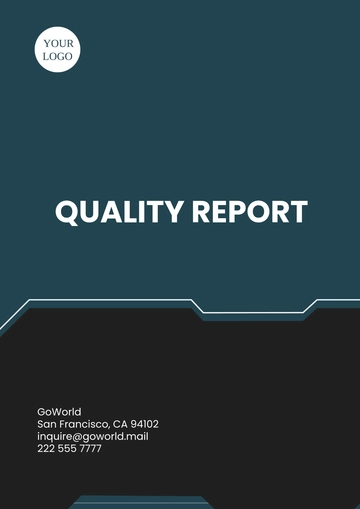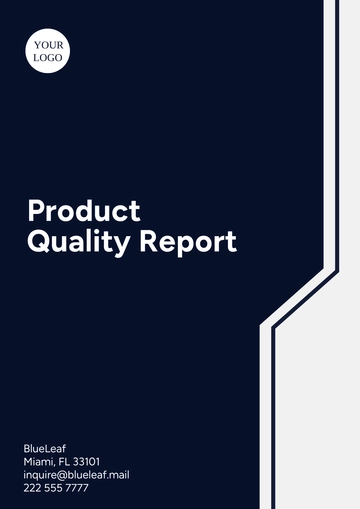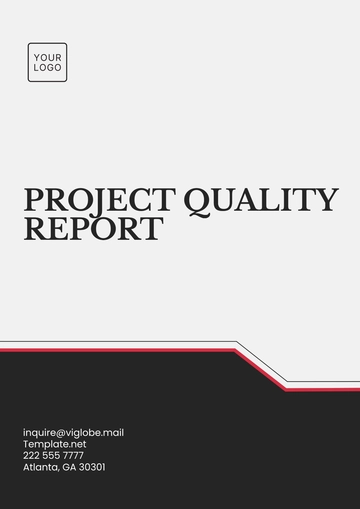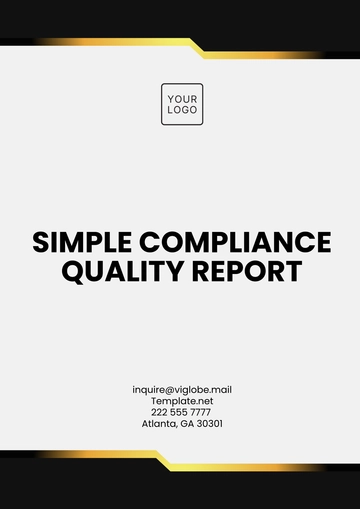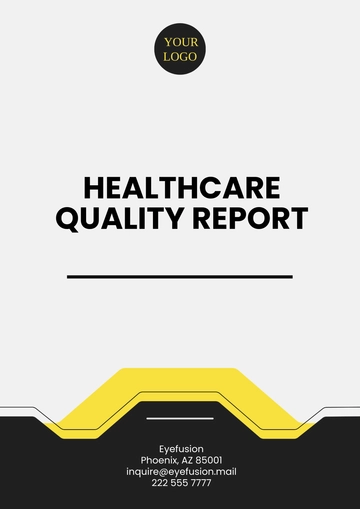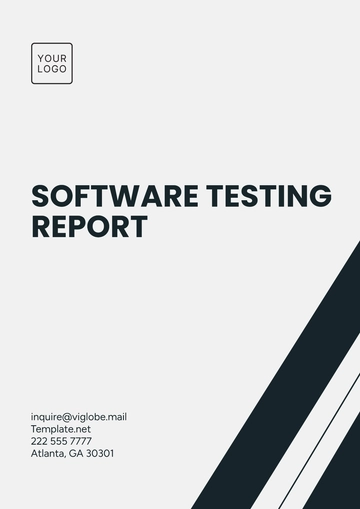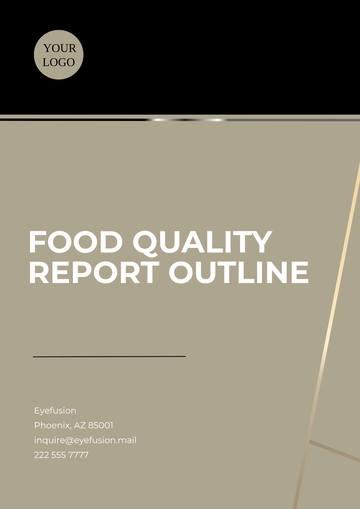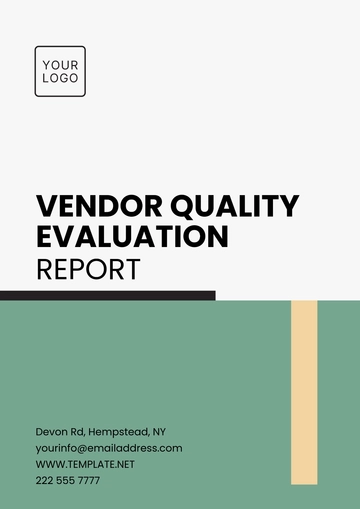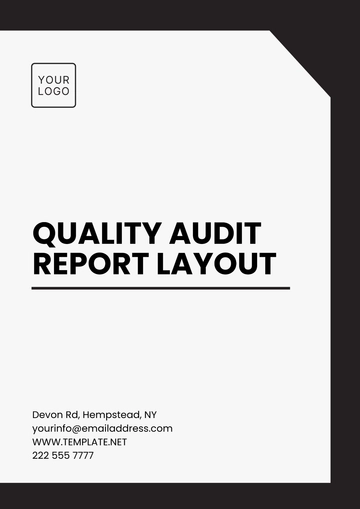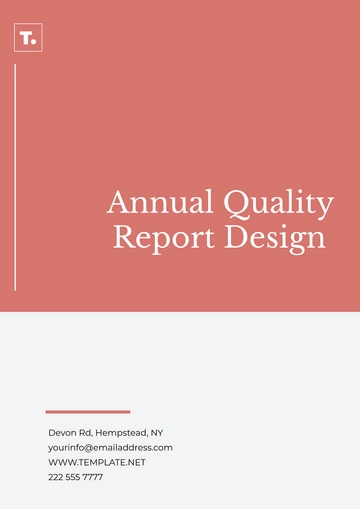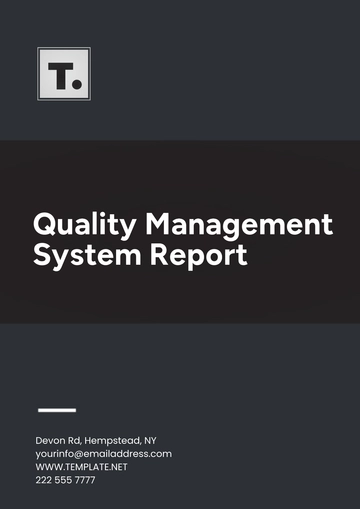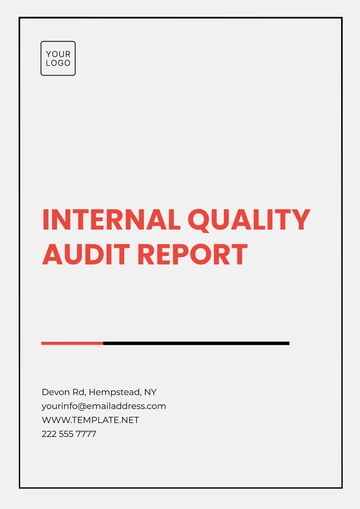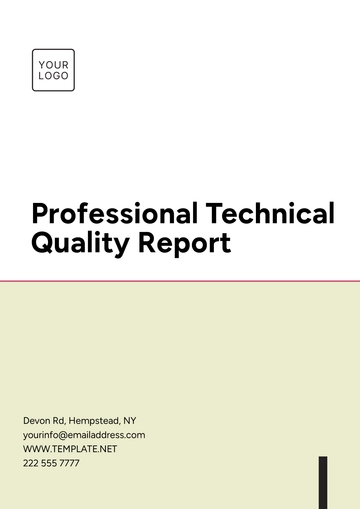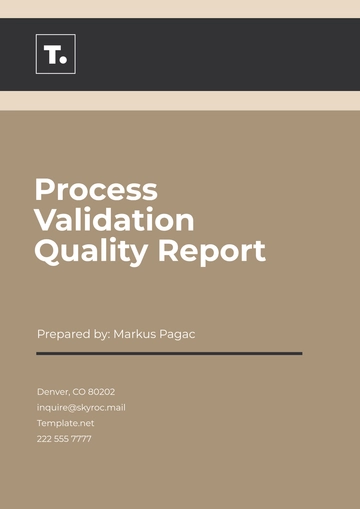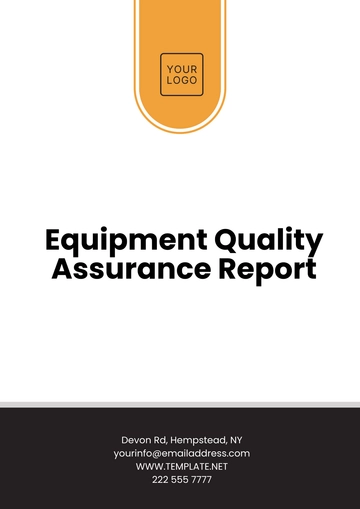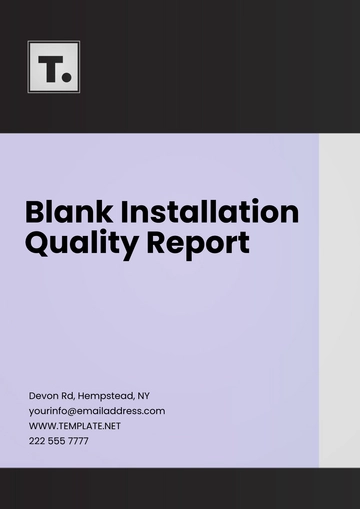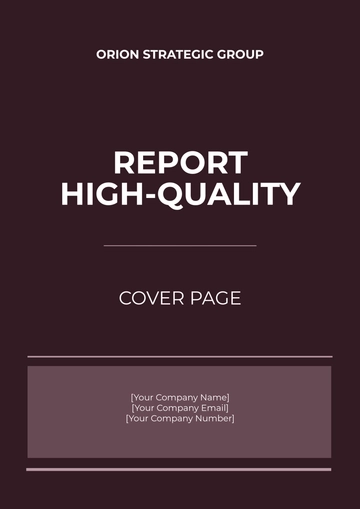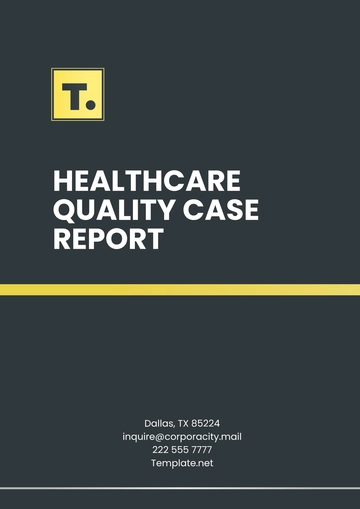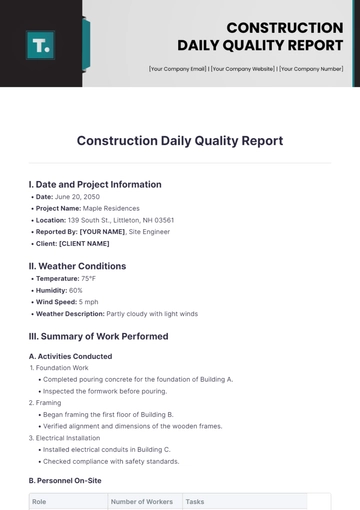Free Restaurant Quality Assurance Report

I. Introduction
A. Purpose of the Report
This report aims to evaluate the overall quality of operations at [Your Company Name] to ensure that it meets predetermined standards of excellence in food service, cleanliness, safety, and customer satisfaction.
B. Scope and Coverage
The assessment encompasses all aspects of the restaurant's operations, including food safety, hygiene practices, menu quality, customer service, staff professionalism, facility maintenance, compliance with regulations, and recommendations for improvement.
C. Methodology
The evaluation was conducted through a combination of on-site inspections, interviews with staff members, review of documentation such as sanitation logs and training records, and analysis of observational data gathered during the assessment period.
II. General Observations
A. Overall Cleanliness and Hygiene
The dining area and restrooms were meticulously clean and well-maintained throughout the evaluation period, with no evidence of spills, debris, or unclean surfaces observed. Regular sanitation practices were evident, contributing to a hygienic environment for both customers and staff.
B. Staff Appearance and Professionalism
Staff members consistently presented themselves in a professional manner, wearing clean and pressed uniforms and displaying a positive attitude towards their duties. Their professionalism contributed to a welcoming atmosphere for patrons.
C. Ambiance and Atmosphere
The restaurant ambiance was warm and inviting, with comfortable seating arrangements and appropriate lighting contributing to a relaxed dining experience. Background music played at a moderate volume, enhancing the overall atmosphere without overpowering conversation.
D. Compliance with Regulations and Standards
[Your Company Name] demonstrated a strong commitment to compliance with local health regulations and industry standards throughout the evaluation period. All required permits and certifications were prominently displayed, and staff members were knowledgeable about relevant regulations.
III. Food Safety and Hygiene
A. Food Storage Practices
Aspect | Observation |
|---|---|
Refrigerator | Food items properly labeled and organized, with raw and cooked foods stored separately to prevent cross-contamination. |
Freezer | Freezer maintained at the recommended temperature of -18°C (0°F) or below, with no signs of frost buildup or temperature fluctuations observed during the assessment. |
Dry Storage | Dry goods stored in sealed containers and elevated off the floor to prevent pest infestation, with expiration dates regularly checked and rotated to ensure freshness. |
B. Food Handling Procedures
Staff members adhered to strict food handling protocols, including frequent handwashing, glove usage when handling ready-to-eat foods, and proper utensil sanitation between uses. Cross-contamination risks were minimized through careful segregation of raw and cooked ingredients.
C. Sanitation of Food Preparation Areas
Food preparation surfaces were routinely sanitized using approved disinfectants after each use, with particular attention paid to high-touch areas such as cutting boards, countertops, and equipment handles. Sanitation logs were maintained to track cleaning activities and ensure consistency.
D. Temperature Control Measures
Aspect | Observation |
|---|---|
Food Holding | Hot holding equipment maintained food temperatures above 60°C (140°F), while cold holding equipment kept perishable items below 4°C (40°F), as per food safety guidelines. |
Cooking Equipment | Cooking equipment such as grills and ovens were calibrated and monitored regularly to ensure that they reached and maintained appropriate cooking temperatures for safe food preparation. |
IV. Menu and Food Quality
A. Menu Variety and Accuracy
The menu offered a diverse selection of dishes, catering to various dietary preferences including vegetarian, vegan, and gluten-free options. Menu descriptions were clear and accurate, providing customers with a comprehensive understanding of each dish.
B. Freshness and Quality of Ingredients
Ingredients used in menu items appeared fresh and of high quality, contributing to the overall taste and presentation of dishes. Locally sourced produce was prominently featured, highlighting a commitment to supporting local suppliers and ensuring freshness.
C. Presentation of Dishes
Dishes were artfully presented, with attention to detail evident in the plating and garnishing of each item. Vibrant colors and contrasting textures enhanced the visual appeal of the dishes, enticing customers to indulge in their culinary experience.
D. Taste and Flavor Profile
Dishes sampled during the evaluation period exhibited a harmonious balance of flavors, showcasing the culinary expertise of the kitchen staff. Bold and distinctive flavors were complemented by subtle nuances, resulting in a memorable dining experience for patrons.
V. Customer Service
A. Responsiveness and Friendliness of Staff
Staff members demonstrated a proactive approach to customer service, greeting patrons warmly upon entry and promptly addressing any inquiries or requests. Their friendly demeanor and willingness to assist contributed to a positive dining atmosphere.
B. Accuracy of Orders
Orders were consistently taken with precision, with staff members confirming specific requests and dietary preferences to ensure accuracy. Attention to detail during order preparation minimized errors and enhanced overall customer satisfaction.
C. Timeliness of Service
Service was efficient and well-coordinated, with minimal waiting times for both food and beverages. Staff members worked together seamlessly to deliver orders promptly, maintaining a steady flow of service throughout peak dining hours.
D. Handling of Customer Feedback and Complaints
Customer feedback and complaints were handled with professionalism and empathy, with staff members actively listening to customer concerns and offering appropriate solutions. Resolution of issues was swift, with a focus on ensuring customer satisfaction and loyalty.
VI. Staff Training and Knowledge
A. Training Programs in Place
[Your Company Name] maintains comprehensive training programs for all staff members, covering topics such as food safety, customer service, menu knowledge, and emergency procedures. New hires undergo thorough onboarding and orientation sessions to ensure a strong foundation in restaurant operations.
B. Knowledge of Menu Items and Ingredients
Staff members demonstrate a solid understanding of the menu, including ingredients, preparation methods, and allergen information. Regular menu training sessions and updates are conducted to keep staff informed of any changes or additions to the menu.
C. Awareness of Food Safety Practices
Food safety is a top priority at [Your Company Name], and all staff members receive extensive training on proper food handling, sanitation, and hygiene practices. Regular refresher courses and assessments are conducted to reinforce compliance with food safety regulations.
D. Communication Skills
Effective communication skills are emphasized during staff training, enabling team members to interact confidently with customers and colleagues. Role-playing exercises and scenario-based training sessions are conducted to enhance communication abilities and resolve potential conflicts diplomatically.
VII. Facility Maintenance
A. Condition of Dining Area Furniture and Fixtures
The dining area furniture and fixtures are well-maintained and in good condition, with no signs of damage or wear observed. Regular inspections are conducted to identify any maintenance issues and address them promptly to ensure customer comfort and safety.
B. Cleanliness of Restrooms
Restrooms are cleaned and sanitized regularly throughout the day, with adequate supplies of soap, paper towels, and toilet paper available for customer use. Inspection logs are maintained to track cleaning activities and ensure compliance with sanitation standards.
C. Maintenance of Kitchen Equipment
Kitchen equipment is inspected and maintained regularly to ensure optimal performance and safety. Preventive maintenance schedules are followed diligently, with any issues identified during inspections addressed promptly by qualified technicians.
D. Pest Control Measures
[Your Company Name] has implemented robust pest control measures to prevent infestations and maintain a sanitary environment. Regular inspections are conducted by licensed pest control professionals, and proactive measures such as sealing entry points and proper waste management practices are employed to minimize pest activity.
VIII. Compliance and Documentation
A. Adherence to Local Health Regulations
[Your Company Name] is fully compliant with all local health regulations and food safety standards. Regular inspections by health authorities are conducted, and any recommendations or requirements are promptly addressed to ensure ongoing compliance.
B. Record-Keeping of Inspections and Maintenance
Detailed records of inspections, maintenance activities, and corrective actions are maintained both electronically and in hard copy format. These records include dates, findings, actions taken, and signatures of responsible personnel to ensure accountability and traceability.
C. Display of Permits and Certifications
All required permits, licenses, and certifications are prominently displayed in public areas of the restaurant, such as near the entrance or at the cashier station. This ensures transparency and demonstrates [Your Company Name]'s commitment to compliance with regulatory requirements.
D. Training Records for Staff
Comprehensive training records for all staff members are maintained, including dates of training sessions, topics covered, and individual performance assessments. These records serve as evidence of staff competency and compliance with training requirements.
IX. Recommendations for Improvement
A. Priority Areas for Action
Based on the findings of the assessment, priority areas for improvement include enhancing staff training programs to further emphasize food safety practices, implementing a more robust system for tracking and addressing customer feedback, and conducting regular preventive maintenance checks on kitchen equipment.
B. Suggestions for Operational Enhancements
Operational enhancements such as streamlining order processing procedures, implementing technology solutions for order management and customer feedback collection, and exploring opportunities for menu innovation and diversification can further elevate [Your Company Name]'s performance and customer satisfaction.
C. Training Needs for Staff
Additional training in areas such as conflict resolution, upselling techniques, and cultural sensitivity can enhance staff effectiveness and contribute to a more personalized and memorable dining experience for customers.
D. Long-Term Strategies for Quality Assurance
Long-term strategies for quality assurance may include investing in advanced kitchen equipment with built-in safety features, establishing partnerships with local suppliers to ensure a consistent supply of high-quality ingredients, and fostering a culture of continuous improvement through regular staff feedback sessions and performance reviews.
X. Conclusion
A. Summary of Findings
In summary, the assessment indicates that [Your Company Name] is performing well in many areas, with strong adherence to food safety standards, high-quality menu offerings, and excellent customer service. However, there are opportunities for improvement identified, particularly in staff training and operational efficiency.
B. Acknowledgment of Positive Aspects
It is important to acknowledge the positive aspects of [Your Company Name]'s operations, including the dedication of staff members, the commitment to cleanliness and hygiene, and the focus on customer satisfaction.
C. Commitment to Continuous Improvement
[Your Company Name] remains committed to continuous improvement and will take proactive steps to address the recommendations outlined in this report. By focusing on staff training, operational enhancements, and long-term quality assurance strategies, [Your Company Name] aims to further elevate its performance and exceed customer expectations in the future.
- 100% Customizable, free editor
- Access 1 Million+ Templates, photo’s & graphics
- Download or share as a template
- Click and replace photos, graphics, text, backgrounds
- Resize, crop, AI write & more
- Access advanced editor
Identify areas for enhancement with the Restaurant Quality Assurance Report Template from Template.net. This editable and customizable template streamlines your assessment process, ensuring compliance with industry standards. With the AI Editor Tool, effortlessly tailor the report to your restaurant's needs. Elevate your operations and exceed customer expectations with this comprehensive quality assurance solution.
You may also like
- Sales Report
- Daily Report
- Project Report
- Business Report
- Weekly Report
- Incident Report
- Annual Report
- Report Layout
- Report Design
- Progress Report
- Marketing Report
- Company Report
- Monthly Report
- Audit Report
- Status Report
- School Report
- Reports Hr
- Management Report
- Project Status Report
- Handover Report
- Health And Safety Report
- Restaurant Report
- Construction Report
- Research Report
- Evaluation Report
- Investigation Report
- Employee Report
- Advertising Report
- Weekly Status Report
- Project Management Report
- Finance Report
- Service Report
- Technical Report
- Meeting Report
- Quarterly Report
- Inspection Report
- Medical Report
- Test Report
- Summary Report
- Inventory Report
- Valuation Report
- Operations Report
- Payroll Report
- Training Report
- Job Report
- Case Report
- Performance Report
- Board Report
- Internal Audit Report
- Student Report
- Monthly Management Report
- Small Business Report
- Accident Report
- Call Center Report
- Activity Report
- IT and Software Report
- Internship Report
- Visit Report
- Product Report
- Book Report
- Property Report
- Recruitment Report
- University Report
- Event Report
- SEO Report
- Conference Report
- Narrative Report
- Nursing Home Report
- Preschool Report
- Call Report
- Customer Report
- Employee Incident Report
- Accomplishment Report
- Social Media Report
- Work From Home Report
- Security Report
- Damage Report
- Quality Report
- Internal Report
- Nurse Report
- Real Estate Report
- Hotel Report
- Equipment Report
- Credit Report
- Field Report
- Non Profit Report
- Maintenance Report
- News Report
- Survey Report
- Executive Report
- Law Firm Report
- Advertising Agency Report
- Interior Design Report
- Travel Agency Report
- Stock Report
- Salon Report
- Bug Report
- Workplace Report
- Action Report
- Investor Report
- Cleaning Services Report
- Consulting Report
- Freelancer Report
- Site Visit Report
- Trip Report
- Classroom Observation Report
- Vehicle Report
- Final Report
- Software Report
